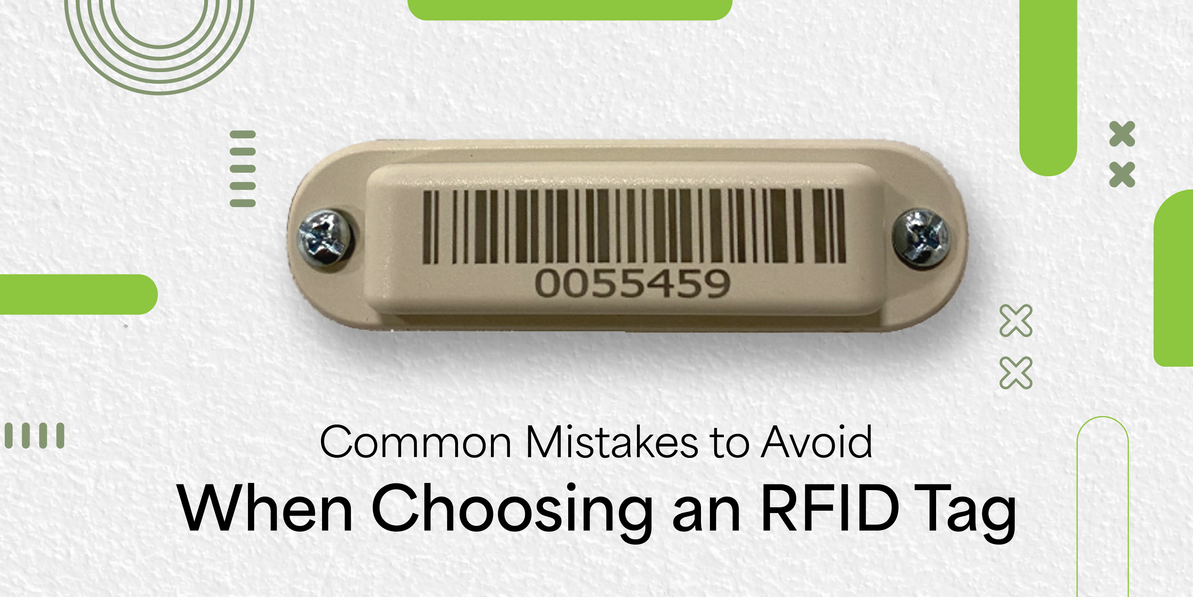Common Mistakes to Avoid when Choosing an RFID Tag
At the time of starting an RFID project, selecting an RFID tag is usually one of the first tasks. However, common mistakes at this stage of the project can cause issues down the line. With thousands of RFID tags to choose from, it’s important to avoid these common mistakes.
Incorrect Frequency
Radio Frequency Identification (RFID), is actually not a single technology but a group of technologies. Each of these of technologies , explained in detail here, have their own use cases and applications. Choosing the wrong frequency, can lead to issues where the RFID tags may not have the appropriate read ranges.
In addition, as each of these technologies operate on different frequencies, they often have their own protocols and standards, thus having mismatching frequencies between the RFID tags and their respective hardware may lead to a mismatched system.
A simple way to avoid this mistake is cross reference the frequency, protocols and standards between the RFID tags and the desired RFID hardware that is to be used in the project.
Incorrect Formfactor
These are certain materials out that that work really well with RFID such as cardboard and most plastics. However, other material such as metal or items that have liquid inside of them may play an impact on the performance of the system. This doesn’t mean that RFID doesn’t work with this material but instead means that the correct RFID tags should be chosen for the job. For example, with UHF (RAIN) RFID, metal reflects RFID so special on-metal RFID tags and labels should be used.
Durability
It’s important to consider the entire lifecycle that the item which is being RFID tagged is going to go through, as the RFID tag is itself will need to have the same robustness. For example, if the item will go through extreme temperature or moisture, it’s important to cross check the RFID tag to ensure it’s rated for the same environment.
Scalability
When starting off, it’s really easy to make decisions in regards to how or where an RFID tag will be attached to an item. However, consider the long term. When the project scales across the company, will you still be able to manually attach the tag to the asset or would it be easier to have a vendor attach it during manufacturing?
In addition, consider the data you are placing onto the RFID tag – will this scale when the asset or item moves through its lifecycle. If other entities wanted to leverage the data (assuming you’d want to have interoperability), it is easy to share the data?
How about where you are attaching the RFID tag on the product. Will this cause issues to others down the line?
Considering these common mistakes may help you avoid a pitfall and lead to success with your RFID project. Do you need help with your RFID implementation? Please reach out and we’d be happy to help.
Recent Posts
-
Stages of RFID Seal Tags: From Manufacturing to Application
Radio Frequency Identification (RFID) technology has revolutionized supply chain management, asset t …Jun 30th 2025 -
Ultimate Comparison Guide: Zebra RFD40 Premium Plus vs. RFD9090 vs. MC3330xR UHF RFID Readers
In the evolving world of RFID-based asset tracking, inventory management, and supply chain automatio …Jun 26th 2025 -
Comparative Analysis of Zebra RFID Fixed Readers: FXR90 vs FX7500 vs FX9600
Fixed RFID readers are critical components of modern RFID-based systems used in logistics, manufactu …Jun 21st 2025




